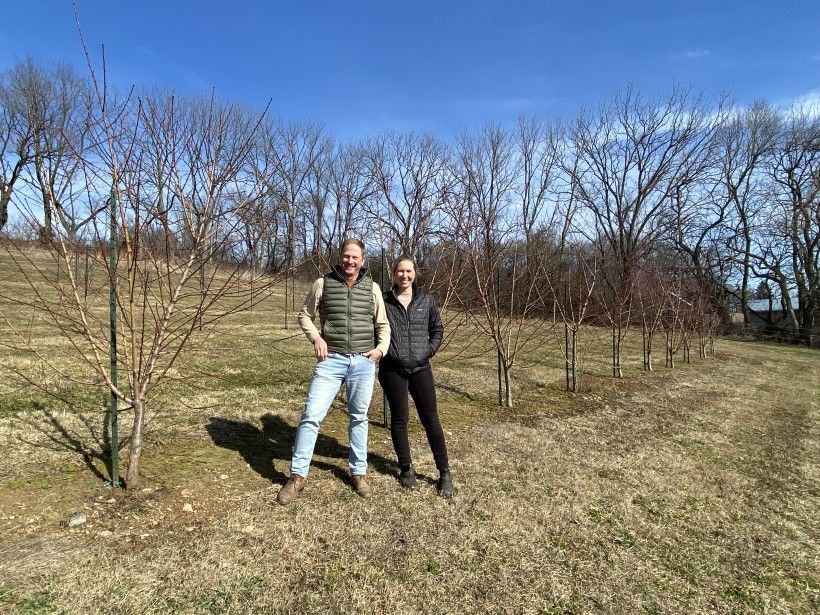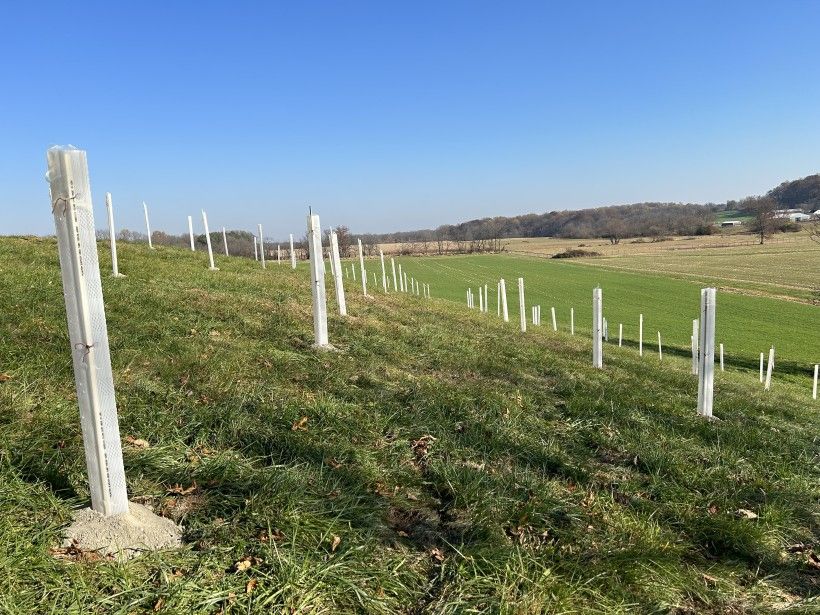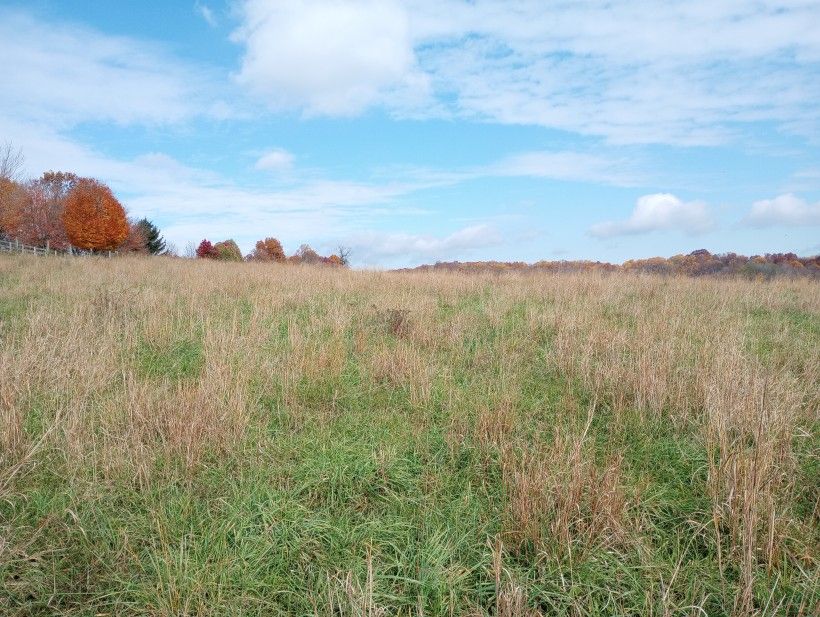A Look at Landowner Stewardship
Conserving one’s land is only the first step in a lifelong relationship with landowner stewardship. Late last year, the Conservancy launched a new Landowner Stewardship Program to help its easement landowners with improving the overall ecosystem health of their properties on both a local and regional scale. In the following article, we spoke to several of our dedicated landowners to discuss the reasons why they decided to take extra steps to improve their property’s ecological value and the advice they have for other landowners getting involved in stewardship.
Reforesting with natives
When asked why they planted over 300 trees on their dairy farm in West Marlborough Township, the Bucklin family emphatically responded, “It was a no-brainer once the project was explained. Anytime we can work with a local institution to plant trees on our properties, we jump at the opportunity. Reforesting portions of our properties, especially along streams, is a priority for our family.”

The Conservancy worked with the Keystone Ten Million Trees Partnership in obtaining the 335 trees planted on the Bucklin farm. The Bucklins were able to select species that were best suited for the planting location and conditions. Native species such as red maples, sycamores, eastern redbuds, and several others were chosen to infill open areas on their farm that are not being used for agricultural purposes.
Native trees are not only beautiful to behold, but are best suited for our local conditions and provide immeasurable ecological benefits to the environment. “We chose from a fantastic list of native trees and picked the ones we felt would grow fast, look the best from the road and from on the farm, and also help create long-term habitats for birds and other creatures.”
The Bucklin family’s advice to potential landowners considering a similar project: “Plant as many native trees as possible on your properties. The short-term maintenance will be worth the long-term benefits for generations to come.”
Weeding out invasives
After moving into their home on Apple Grove Road in 2021, Jake and Becca Kaplan didn’t waste any time working to remove invasive plant species growing throughout their property. “Watching invasive species take hold and contribute to the imbalances of the ecosystem is like watching a family member succumb to illness,” said Jake.
The Kaplans started with targeted species such as bush honeysuckle, multiflora rose, tree-of-heaven, and Russian olive. As their efforts yielded space on the land, they began to plant native trees and shrubs to fill the void left behind as well as to stabilize and protect the tributary running through their property. The overreaching goal for Jake and Becca is to reinstate a healthy ecosystem of native species on their land that not only hosts a diverse range of plants and animals, but also sustains itself with minimal input.

Recognizing that this goal won’t be achieved overnight, their advice to others interested in improving the habitat on their land is, “Hurry up and get started!” Jake works towards their goals whenever he can, adding that 15 minutes here and there go a long way in addition to the many Sundays they devote to the cause.
Understanding that it can be intimidating to start a stewardship project on your land, Jake recommends picking a project that you can manage. He suggests starting with a smaller project that is easily managed to completion rather than taking on a larger project that may need to be repeated or redone several times to achieve the objective.
Implementing adaptive grazing
Bill and Helen Elkins have been longtime conservation leaders in their community since they became involved in the Brandywine’s unprecedented effort to preserve over 5,300 acres in Chester County in 1984, known as the King Ranch Project. These days, their cattle operation, Buck Run Land and Cattle Co., raises 100% grass-fed beef with a focus on the preservation of the farm’s natural resources.
The strategy for the farm is adaptive grazing, which avoids over-grazing by mimicking the pattern of a migrating herd. Utilizing portable shaders and solar-powered waterers, cattle are moved to different grazing spots using polywire, allowing the cows to access a different strip each day. The portable shaders keep the cattle away from the edges of woods and streams where they previously went to cool off, protecting these sensitive resources. The cattle do not eat the grass all the way to the ground, helping minimize erosion and increase groundwater infiltration, and are in place long enough to mix the manure and urine into the soil without creating a problem with concentrated waste. In this way, the grazing animals improve soil health rather than damaging it. According to Bill, adaptive grazing is a win-win. “Grazing cattle maintain the landscape, fertilize the soil, and produce healthy meat.”

Buck Run Land and Cattle Co.’s stewardship goes far beyond their farming practices. When the Conservancy put out a call for easement landowners to participate in the Family Forest Carbon Program (FFCP), Bill and Helen were among the first to respond. They enrolled in the program and in return received a detailed report of the condition of their woodlands, including the strengths and areas that could use improvement. In addition, they receive a payment each year that they can use for whatever they need to implement environmental improvements on their property. This year, they utilized the money to help remove dead and dying ash trees across the farm. In the future, Helen hopes to use the funding to tackle the stewardship goals outlined in the FFCP’s report.
Land stewardship and you
Land stewardship can take on many forms, such as planting trees, implementing agricultural best management practices, or tackling invasive species, but they all have one goal in mind: to protect the land in perpetuity for the health of the overall ecosystem and for future generations to come. But you don’t need to be an easement owner, or even a landowner, to be a good steward of the land! Everyone can get involved in land stewardship, whether it’s through planting a native tree in your backyard, joining a local organization’s river clean up, or even just by picking up trash when you are on a hike.